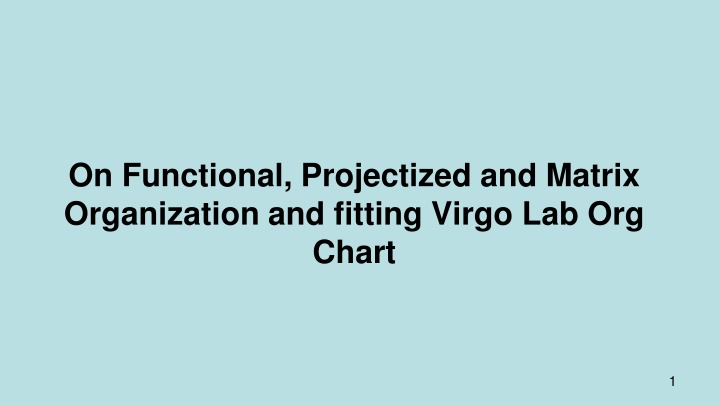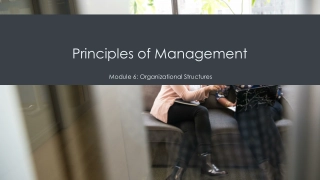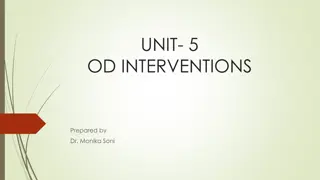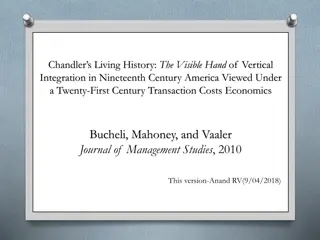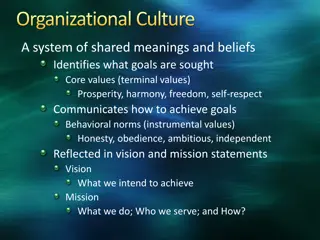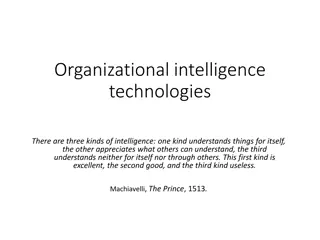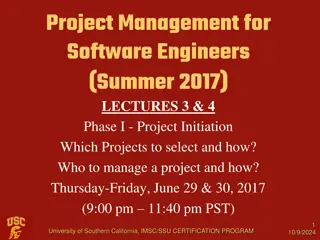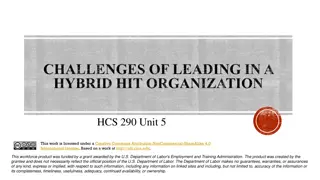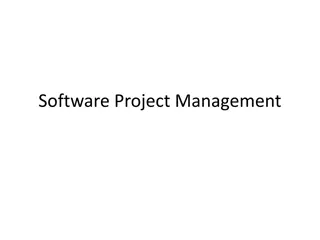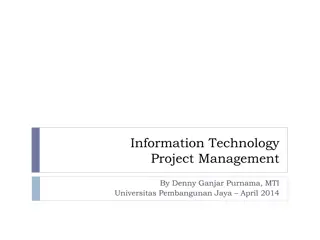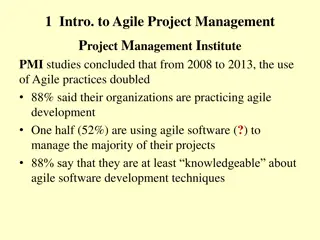Organizational Structures and Project Management
The differences between functional, projectized, and matrix organizations in terms of team structures, decision-making, advantages, and disadvantages. Understand how projects are managed within each type of organizational structure. Learn the nuances of functional specialization, project control, and resource allocation in project management.
Download Presentation

Please find below an Image/Link to download the presentation.
The content on the website is provided AS IS for your information and personal use only. It may not be sold, licensed, or shared on other websites without obtaining consent from the author.If you encounter any issues during the download, it is possible that the publisher has removed the file from their server.
You are allowed to download the files provided on this website for personal or commercial use, subject to the condition that they are used lawfully. All files are the property of their respective owners.
The content on the website is provided AS IS for your information and personal use only. It may not be sold, licensed, or shared on other websites without obtaining consent from the author.
E N D
Presentation Transcript
On Functional, Projectized and Matrix Organization and fitting Virgo Lab Org Chart 1
Functional Organization The organization is grouped by area of specialization within different functional areas (electronics, mechanics, sys engineering, etc). In a functional organization, maximum power rests with the functional manager and the project manager s role in decision making is minimal. Advantages the career progression of the team member is fully owned by the functional manager. Team members report to only one boss, hence avoidance of conflict of interest. Similar resources are centralized, hence better synergy within groups Disadvantages of functional organization; Preference for functional specialization, at the cost of the project No career path in project management Inadequate integration across different functional areas Conflict and rivalry between functional areas may impede communication No individual has full authority and responsibility for the project. No proper accountability for the project can be expected. Project manager has no authority
Projects in the Functional Organization If more than one functional area is involved in a project, the coordination of project activities takes place through the hierarchy Project Coordination Functional Area A Functional Area B Functional Area C Staff Staff Staff Staff Staff Staff Staff Staff Staff
Projectized Organization In projectized organization, all the work is considered as a project and the project manager has total control over the projects. Personnel are assigned to and report to a project manager. Advantages Team members will be more committed to the project Availability of career paths within the project management stream More effective project related communication Disadvantages When the project gets over, the team gets dismantled, hence lack of security leading short term commitments Duplication of facilities and job functions eg:- administrative officer for each project, HR coordinator for each project, etc. Less efficient use of resources. Project teams tend to hang on to resources both material and human, even after the need for them.
Projects in the Projectized Organization Project Manager Project Manager Project Manager Staff Staff Staff Staff Staff Staff Staff Staff Staff Staff Staff Staff Project Coordination
Matrix Organization Matrix organization is a hybrid of both functional and projectized organization, trying to leverage the strength of both. The team members report to two bosses, the project manager and the functional manager. In a strong matrix, the power rests with the project manager. In a weak matrix, the power rests with the functional manager. In a balanced matrix, the power is shared between the project manager and the functional manager. Advantages More support from functional organizations Allows for the sharing of diverse resources across multiple projects Better horizontal and vertical communication (better than functional) Disadvantages More than one boss for project teams, leaving the team members between devil and deep sea, due to conflicts between the project manager and the functional manager More complex to monitor and control, if it spans different locations there is a potential for conflict between project managers and functional managers
The (Strong) Matrix Organization Manager of Project Mgrs. Functional Manager Functional Manager Functional Manager Project Manager Staff Staff Staff Project Manager Staff Staff Staff Project Manager Staff Staff Staff Project Manager Staff Staff Staff Project Coordination
Strong Matrix Organization In the strong - Matrix a project manager is selected to oversee the completion of the project across the various involved functional levels of the organization. The project manager is ultimately is responsible for the project s completion, has final say on major project decisions and controls most aspects of the project, including the assignment of functional personnel, what they do and when. The functional managers maintain title over their respective personnel and have consultation rights. Advantages ensures a strong project focus by having a project manager who performs a coordinating and integrating role across functional areas
Problems With Matrix Organizations Failure to understand the key principles and roles in the more complex matrix organizational environment Distrust in organizational forms which are not based on unity of command Apprehensions of functional managers over the apparent superiority of the project goals over those of the functional entity Senior management shortcomings in terms of clearly delineating in writing the formal and reciprocal roles of all the key managers involved in the project
Problems With Matrix Organizations Lacking understanding by the project team of the functional professionals and their managers role and responsibilities Incompetent project and functional managers / project managers who manage less and coordinate more / decision referral by project managers to senior management Inadequate stakeholder management Lack of trust, integrity, loyalty and commitment by project team members
Conclusions The advantages of (strong) Matrix organization largely overcome the listed problems as long as senior management is well aware of them and they are properly dealt with On the next slide the adaptation of the VirgoLab org chart proposed by the review committee into a strong matrix organization by dealing with Detector Upgrade, Detector Operations and Commissioning as projects with the corresponding Coordinator as project manager.
Virgo Lab organization chart EGO Director Virgo Spokesperson Virgo Deputy Spokesperson Technical Committee (The Board of Functional Managers) Executive Board (The Board of Project Managers) Commissioning Coordinator Vacuum & Mechanics System Eng. Infrastructure Information Technology Interferometer Technology Detector Operations Coordinator -Project Management --QA/QC Electronics - Vacuum Operation - Mechanics - Clean Operation Civil -Computing facilities & Data Storage -IT Facilities & Network -Data Analysis support Online/Offline Computing & Software Engineering Run planning Coordinator Computing Coordinator Calibration Coordinator Low latency Coordinator Open Data Coordinator Optics ELE/HVAC Systems Noise & Controls Detector Upgrade Coordinator . Virgo Subsystem Managers: PSL, INJ, TCS, PAY, SAT, etc.
